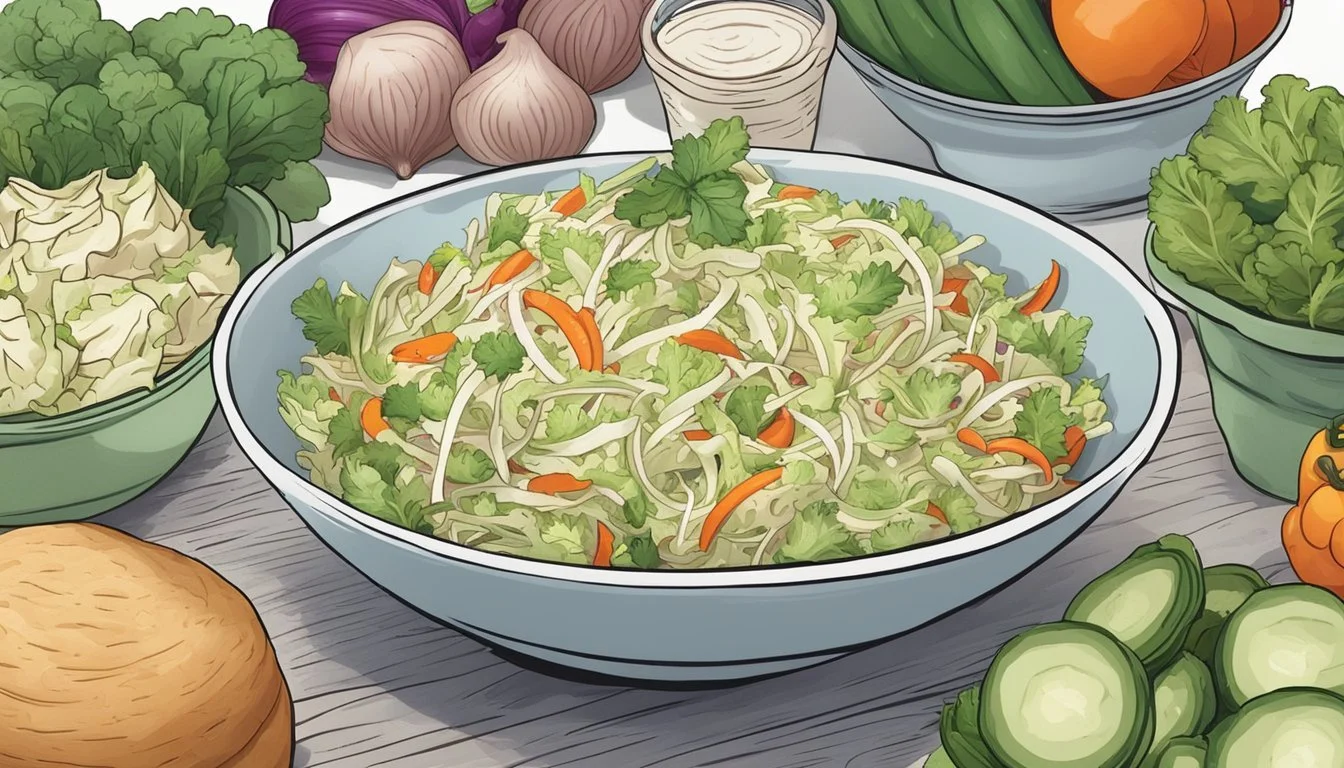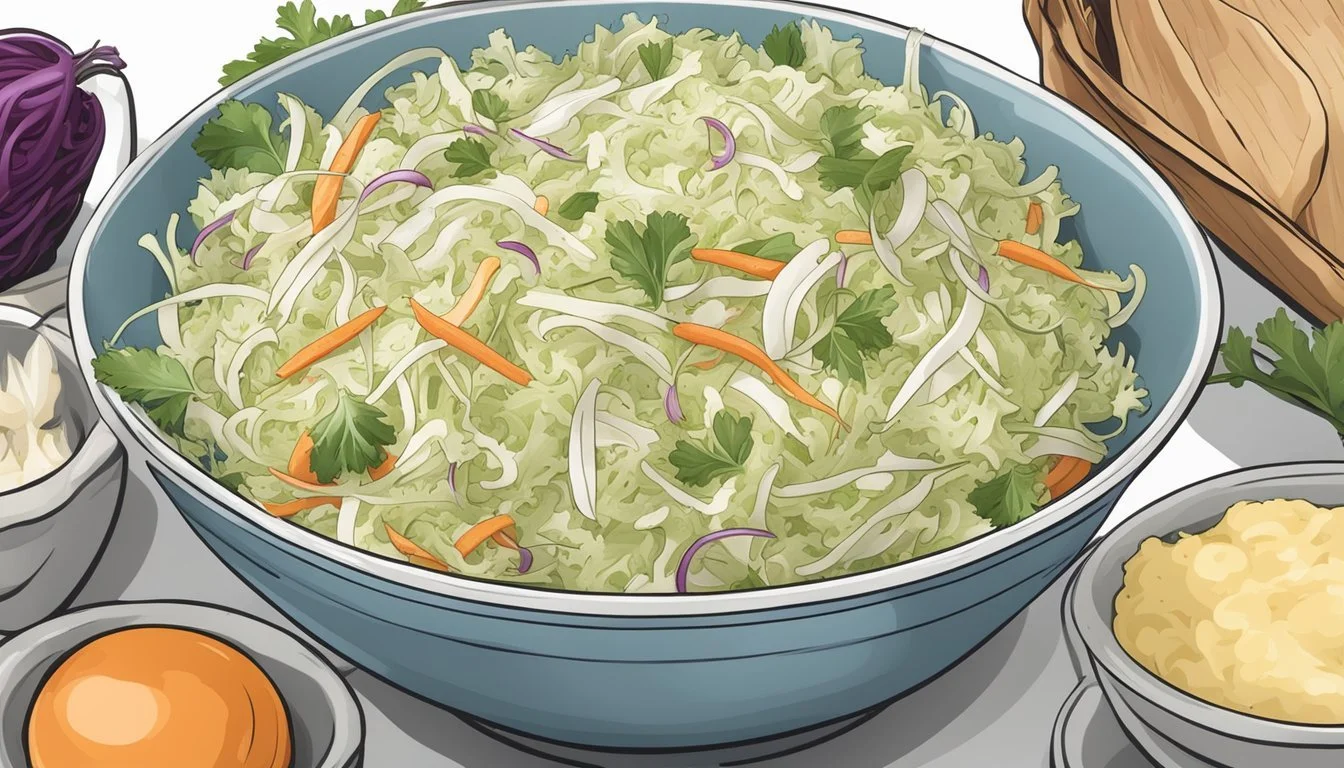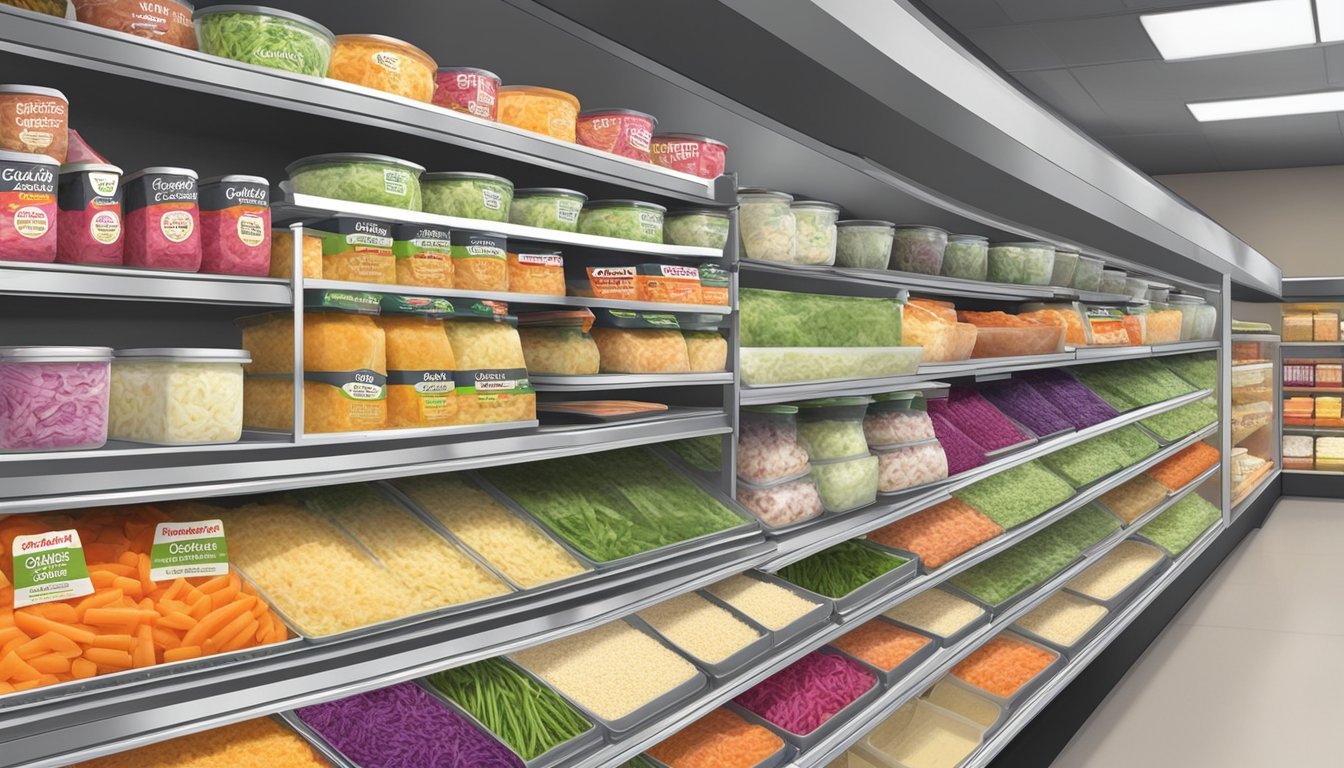Is Coleslaw Gluten-Free?
Understanding the Ingredients and Preparation
Coleslaw is a popular salad typically made from shredded cabbage and a dressing, either creamy or vinaigrette-based. A common question among those with gluten sensitivities or celiac disease is whether coleslaw is gluten-free. The answer largely depends on the specific ingredients and preparation methods used. Gluten is a protein found in wheat, barley, and rye, and it is not naturally present in the fresh ingredients typically found in coleslaw, such as cabbage, carrots, and other vegetables.
When considering prepackaged coleslaw or recipes, the gluten content can vary. For instance, some coleslaw dressings may include ingredients with gluten, such as certain brands of mayonnaise, or additives in prepackaged slaw mixes. Moreover, coleslaw served in restaurants may be at risk of cross-contamination if the kitchen also prepares gluten-containing items. To ensure the coleslaw is gluten-free, it is essential to review the ingredients list of the coleslaw mix and dressing, or inquire about the preparation practices if dining out.
For those making coleslaw at home, it can easily be prepared as a gluten-free dish by using gluten-free mayonnaise and ensuring that any additional ingredients, such as mustard or vinegar, are labeled gluten-free. The simplicity of coleslaw ingredients generally makes it straightforward to adapt for a gluten-free diet. When choosing a store-bought option, selecting a certified gluten-free product is the safest route to avoid any gluten-containing ingredients or cross-contamination.
Understanding Gluten and Its Dietary Restrictions
When exploring dietary choices, particularly for those with celiac disease or gluten sensitivity, understanding the role of gluten and the fundamentals of a gluten-free diet is crucial.
What is Gluten?
Gluten is a protein found primarily in wheat, barley, and rye. It acts as a binding agent that helps foods maintain their shape and can be found in a variety of food products, not just breads and pastas. For individuals without adverse reactions, gluten is typically harmless.
Celiac Disease and Gluten Sensitivity
Celiac disease is an autoimmune disorder where ingestion of gluten leads to damage in the small intestine. Gluten sensitivity, on the other hand, does not damage the intestines but can cause symptoms similar to those of celiac disease. Symptoms for both can range from gastrointestinal distress to nutrient deficiencies.
Basics of a Gluten-Free Diet
A gluten-free diet involves the total elimination of gluten. Those following such a diet must be vigilant about food labels and avoid cross-contamination. Staples of a gluten-free diet include:
Fruits and vegetables
Meat and fish (not breaded or marinated with gluten-containing ingredients)
Dairy products
Grains such as quinoa, rice, and corn
Adhering to this diet is the primary treatment for individuals with celiac disease, providing relief from symptoms and preventing long-term health complications.
Deconstructing Coleslaw
Coleslaw is a traditional side dish often featuring shredded cabbage and carrots, dressed with a blend of mayonnaise, vinegar, and seasonings. This section breaks down its essential components and common ingredients.
Coleslaw Components
Coleslaw mix typically consists of:
Cabbage: The backbone of coleslaw, usually finely shredded.
Carrots: Providing a sweet and crunchy dimension.
Dressing: A mixture that can vary, often including mayonnaise, sugar, vinegar, salt, and pepper to taste.
The mix itself can be store-bought or homemade, but the freshness of ingredients contributes to the slaw's overall quality and texture.
Common Ingredients in Coleslaw
The standard ingredients found in coleslaw dressing often include:
Mayonnaise: Acts as a creamy base.
Vinegar: Adds tanginess; options include cider vinegar and white vinegar.
Sugar: Used to balance the acidity, tailor to preference.
Salt: Enhances flavors.
Pepper: Provides subtle heat and aroma.
The dressing is crucial because it binds the components together, creating a harmonious flavor profile. It is advisable to adjust sugar, salt, and pepper according to one's taste and dietary requirements. When preparing a gluten-free version, one must ensure that all ingredients, particularly the mayonnaise and vinegar, are certified gluten-free to prevent cross-contamination.
Identifying Gluten in Dressings and Additives
When preparing gluten-free coleslaw, it's crucial to scrutinize dressings and additives since these can unexpectedly contain gluten. The focuses of this section are the components of the coleslaw dressing and specific ingredients that may harbor gluten.
Understanding Coleslaw Dressing
Gluten-free coleslaw dressing should be comprised of ingredients that do not contain gluten, a protein found in wheat, barley, rye, and their derivatives. Common gluten-free ingredients in dressings include:
Mayonnaise: Typically gluten-free as it's made from eggs, oil, and vinegar.
Apple cider vinegar: A safe choice for gluten intolerant individuals.
White wine vinegar: Also gluten-free, but always check for potential cross-contamination.
It is paramount to read labels carefully or prepare homemade dressings to ensure all components are gluten-free.
Culprits of Gluten in Dressings
Some dressings may seem harmless but could include ingredients with hidden sources of gluten. Be wary of the following:
Soy sauce: Often made with wheat, unless labeled gluten-free.
Malt vinegar: Derived from barley, malt vinegar is not gluten-free and should be avoided.
Additionally, pre-made dressings might have additives and thickeners that contain gluten. For safety, opt for verified gluten-free coleslaw products or make dressing from scratch with trusted ingredients.
Homemade Gluten-Free Coleslaw
Crafting homemade gluten-free coleslaw is straightforward when using the right ingredients and methods. This section delineates the process, encompassing the selection of gluten-free components, the preparation of the coleslaw mix, and the creation of a gluten-free dressing.
Selecting Gluten-Free Ingredients
When creating a gluten-free coleslaw, it’s imperative to ensure all ingredients lack gluten. Key ingredients include shredded green cabbage and shredded carrots. For a colorful variation, red cabbage can also be incorporated. Spices such as celery seed, sea salt, or kosher salt, and ground black pepper are naturally gluten-free and can be used to enhance flavor.
Condiments: Choose gluten-free mustard or Dijon mustard, and verify if any mayonnaise used is labeled gluten-free.
Sweeteners: Opt for plain sugars or honey as they are gluten-free, avoiding any additives that may contain gluten.
Preparing the Coleslaw Mix
To prepare the coleslaw mix, the process begins with thoroughly washing and then shredding the selected cabbages and carrots. Incorporating both green and red cabbage can add visual appeal and nutritional variety.
Proportions for the mix:
3 cups shredded green cabbage
1 cup shredded red cabbage (optional)
1 cup shredded carrots
Making the Gluten-Free Dressing
The dressing binds the elements of the coleslaw together. For a gluten-free version, you must use condiments that do not contain gluten.
Basic Gluten-Free Coleslaw Dressing:
Combine 1/2 cup of gluten-free mayonnaise with:
1 1/2 tablespoons of apple cider vinegar for tanginess
1/2 teaspoon of celery seed for flavor depth
1 tablespoon of a gluten-free sweetener of choice
Salt (sea or kosher) and black pepper to taste
For an extra zing or to cater to vegan or paleo dietary requirements, replacing mayonnaise with alternatives like vegan mayo or lemon juice is an option.
Mix until the dressing is smooth and fully blended.
The finishing touch involves tossing the shredded cabbage and carrots with the dressing until evenly coated. The slaw can be served immediately or chilled to allow flavors to meld.
Creative Twists to Traditional Coleslaw
Traditional coleslaw gets reinvented with gluten-free variations and unique ingredients that add flavor and texture to this classic dish. These adaptations cater to those with celiac disease and others looking for a delicious, tangy side salad.
Innovative Gluten-Free Variations
When it comes to gluten-free coleslaw, the dressing plays a crucial role. Traditional mayo-based dressings can easily be made gluten-free, but for a creative twist, yogurt or citrus-based dressings offer a lighter alternative with a zesty tang. One can incorporate lemon juice and apple cider vinegar to achieve a delicious tanginess while ensuring the recipe remains gluten-free. Here's a simple variation for a dressing:
1/2 cup gluten-free mayonnaise or plain yogurt
1 1/2 tablespoons apple cider vinegar or lemon juice
1/2 teaspoon sugar (adjust to taste)
1/2 teaspoon celery seeds
Salt and pepper, to taste
Unique Ingredients and Flavors
Adding fruits such as pineapple or raisins can introduce a natural sweetness to the slaw, while a sprinkle of sunflower seeds or chopped nuts adds a contrasting crunch. Chopped bell pepper not only adds a pop of color but also enhances the overall flavor profile. For those desiring a heftier, earthier side, broccoli or shredded Brussels sprouts can serve as a novel base in lieu of traditional cabbage. Consider this combination for a unique gluten-free coleslaw:
3 cups shredded cabbage or Brussels sprouts
1 cup diced pineapple
1/2 cup raisins
1/4 cup sunflower seeds
1/2 diced bell pepper
Dressing (from the previous section)
By embracing these innovations, one transforms the humble cole slaw into a multifaceted side dish that can surprise and satisfy even the most discerning palates. Each ingredient not only ensures that the slaw is gluten-free, but also that it comes with a burst of flavors — from the sweetness of fruit to the tangy zest of the dressing.
Serving and Pairing Coleslaw
Coleslaw is a versatile side dish that enhances the flavors of various main courses, particularly at BBQs and summer gatherings. A well-chilled small or large bowl of coleslaw complements a range of dishes, offering a crisp, tangy counterpoint.
The Perfect BBQ Companion
At a barbecue, coleslaw is almost as essential as the grill itself. Its creamy and crunchy texture offers a refreshing balance to the smokiness of BBQ meats such as pulled pork and ribs. Serving coleslaw in a small bowl alongside these rich, savory meats not only adds a colorful touch to the plate but also provides a palate-cleansing effect, making each bite of BBQ as enjoyable as the first.
Suggested BBQ Pairings:
Pulled Pork Sandwiches
Smoked BBQ Ribs
Grilled Chicken
Complementary Dishes and Occasions
Coleslaw isn't limited to BBQs; it is a classic summer side dish that fits a variety of occasions. It can be served in a large bowl at picnics, potlucks, or even alongside fish dishes. The cool, tangy coleslaw is an ideal companion for fried foods (What wine goes well with fried foods?), as it cuts through the grease and refreshes the palate. Additionally, coleslaw should be stored in the refrigerator until ready to serve to maintain its crispness and prevent spoilage.
Occasions and Pairings:
Picnics: Sandwiches, cold cuts, and wraps
Potlucks: Baked beans, grilled vegetables (What wine goes well with grilled vegetables?)
Dinners: Fish tacos, fried chicken
Storing and Safety Tips
When preparing gluten-free coleslaw, proper storage techniques and awareness of cross-contamination risks are essential for maintaining the dish's freshness and ensuring it remains gluten-free.
Proper Storage of Coleslaw
To maintain freshness and quality, homemade coleslaw should be stored in the refrigerator at a temperature below 40°F (4°C). It's advisable to place the coleslaw in an airtight container to retain its texture and prevent it from absorbing other odors and flavors from the refrigerator. One can also use a jar with a tight-fitting lid if preferable.
For optimal taste, gluten-free coleslaw should be consumed within:
1-2 days: If it contains homemade dressing without preservatives.
3-5 days: If made with store-bought dressing containing preservatives.
It's important to note, the lower the sodium content in the dressing, the shorter the coleslaw's shelf life may be due to sodium's preservative qualities.
Avoiding Cross-Contamination
Coleslaw, albeit gluten-free by nature, can become contaminated if proper kitchen practices aren't followed. To prevent cross-contamination:
Always use clean utensils and cutting boards that haven't come into contact with gluten-containing foods.
When serving, ensure that serving dishes and utensils are strictly for the gluten-free coleslaw. Never allow them to come into contact with gluten-containing foods to avoid traces of gluten transferring.
By faithfully adhering to these storage and safety tips, one ensures that gluten-free coleslaw remains safe to eat and enjoyable for those with gluten sensitivities or celiac disease.
Navigating Pre-Made Coleslaw Options
When purchasing pre-made coleslaw, consumers should carefully consider the gluten-free status of both the coleslaw mix and the coleslaw dressing. Not all pre-made options are safe for those with gluten sensitivities or celiac disease.
Gluten-Free Brands and Labels
For individuals requiring a gluten-free diet, identifying trusted brands that label their coleslaw as gluten-free is crucial. Brands like Eat Smart offer gluten-free options, such as their Broccoli Slaw. Consumers should look for products that carry a certified gluten-free label to ensure the product meets strict gluten-free standards. These labels are typically found on the front of the packaging.
Reading Ingredient Lists and Labels
Reading ingredient lists is essential to avoid gluten-containing items:
Coleslaw Mix: Pre-shredded cabbage and carrots in a coleslaw mix are naturally gluten-free. However, consumers should check for cross-contamination warnings or if the mix includes croutons or crispy noodles which are potential sources of gluten.
Coleslaw Dressing: Key ingredients to check in dressings include vinegar and soy sauce. Dressings should specifically state they use gluten-free vinegar and a gluten-free soy sauce, such as tamari, as traditional soy sauce contains wheat.
Additional tips:
Ingredients to Watch: Look out for additives, preservatives, or thickeners that could contain gluten.
Cross-Contamination: Even if all ingredients are gluten-free, ensure the product is manufactured in a gluten-free facility.
Example ingredient list:
Mayonnaise (gluten-free)
Cider Vinegar (gluten-free)
Sugar
Celery Seeds
Salt
Black Pepper
Consumers are advised to read labels attentively each time they purchase pre-made coleslaw, as manufacturers can change their formulations without notice.








